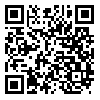Volume 22, Issue 67 (12-2022)
jgs 2022, 22(67): 259-279 |
Back to browse issues page
Download citation:
BibTeX | RIS | EndNote | Medlars | ProCite | Reference Manager | RefWorks
Send citation to:



BibTeX | RIS | EndNote | Medlars | ProCite | Reference Manager | RefWorks
Send citation to:
khedmatzadeh A, Feizizadeh B. (2022). Assessing urban quality of life using remote sensing and GIS (Case study: Urmia Urban Region). jgs. 22(67), 259-279. doi:10.52547/jgs.22.67.259
URL: http://jgs.khu.ac.ir/article-1-3310-en.html
URL: http://jgs.khu.ac.ir/article-1-3310-en.html
1- MSC remote sensing and GIS, Department of Remote sensing and GIS, University of Tabriz
2- Associated professor in department of remote sensing and GIS, University of Tabriz, Iran ,Feizizadeh@tabrizu.ac.ir
2- Associated professor in department of remote sensing and GIS, University of Tabriz, Iran ,
Abstract: (8512 Views)
Quality of life is one of the important issues that was first brought to the attention of scholars by the extensive development of technology and industrialization process in the Western countries, and it is increasingly being studied in this field, and this is important due to the increasing increase in quality of life studies in public policy monitoring. Quality of life can be used as a powerful tool for monitoring community development planning. The existence of spatial and spatial inequalities in the city has caused many problems, including the weakness of resources, inappropriate housing, the problems and damage caused by social inequalities, and undermined the quality of life. In this research, that of terms methodological, descriptive-analytic and in terms of purpose, it is functional used the statistics blocks of Urmia, in the census of 1395, and remote sensing data in combination with GIS have been to understand the quality of life in the 5 regions of Urmia. The criteria defined in this research are in 4 sections: social (including 9 sub-criteria), access to public services (5 sub-criteria), physical (4 sub-criteria), natural (4 sub-criteria), which are based on decision analysis Multi-criteria and integration of layers in the GIS environment. Weights obtained for social dimensions, access to public, natural and physical services derived from network analysis model are respectively 0.506, 0.323, 0.116 and 0.055. The results show that as far as the southwest is moving along the northeastern part of the city, blocks that have a better quality of life are rising. In the urban regions of the region 2, quality of life is more favorable than other urban regions. The results of such studies can help urban planners to better understand and prioritize urban issues as a dynamic environment.
Type of Study: Research |
Subject:
Geography Information System
Send email to the article author
| Rights and permissions | |
 |
This work is licensed under a Creative Commons Attribution-NonCommercial 4.0 International License. |

This work is licensed under a Creative Commons — Attribution-NonCommercial 4.0 International (CC BY-NC 4.0)






